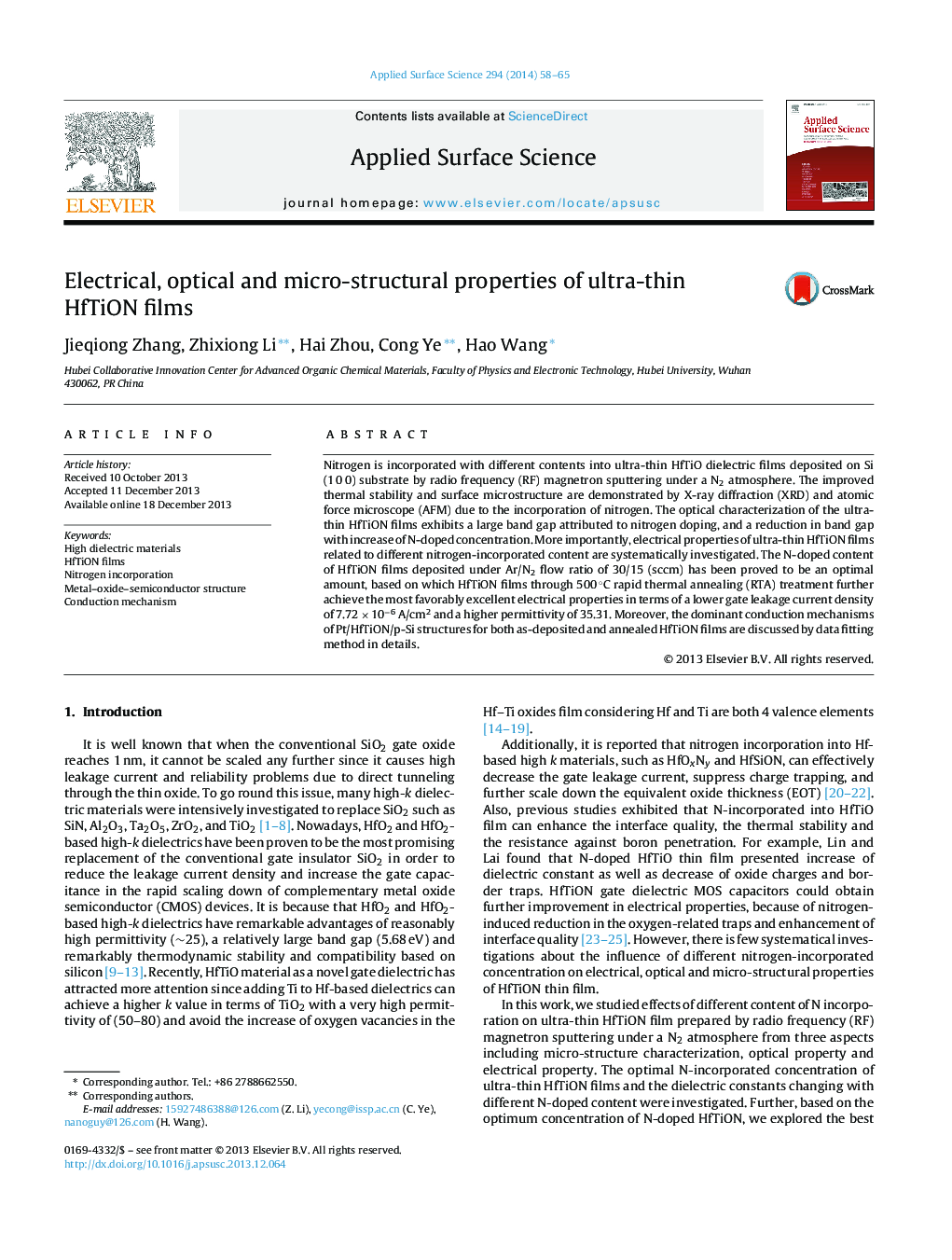| Article ID | Journal | Published Year | Pages | File Type |
|---|---|---|---|---|
| 5351995 | Applied Surface Science | 2014 | 8 Pages |
Abstract
Nitrogen is incorporated with different contents into ultra-thin HfTiO dielectric films deposited on Si (1 0 0) substrate by radio frequency (RF) magnetron sputtering under a N2 atmosphere. The improved thermal stability and surface microstructure are demonstrated by X-ray diffraction (XRD) and atomic force microscope (AFM) due to the incorporation of nitrogen. The optical characterization of the ultra-thin HfTiON films exhibits a large band gap attributed to nitrogen doping, and a reduction in band gap with increase of N-doped concentration. More importantly, electrical properties of ultra-thin HfTiON films related to different nitrogen-incorporated content are systematically investigated. The N-doped content of HfTiON films deposited under Ar/N2 flow ratio of 30/15 (sccm) has been proved to be an optimal amount, based on which HfTiON films through 500 °C rapid thermal annealing (RTA) treatment further achieve the most favorably excellent electrical properties in terms of a lower gate leakage current density of 7.72 Ã 10â6 A/cm2 and a higher permittivity of 35.31. Moreover, the dominant conduction mechanisms of Pt/HfTiON/p-Si structures for both as-deposited and annealed HfTiON films are discussed by data fitting method in details.
Related Topics
Physical Sciences and Engineering
Chemistry
Physical and Theoretical Chemistry
Authors
Jieqiong Zhang, Zhixiong Li, Hai Zhou, Cong Ye, Hao Wang,
